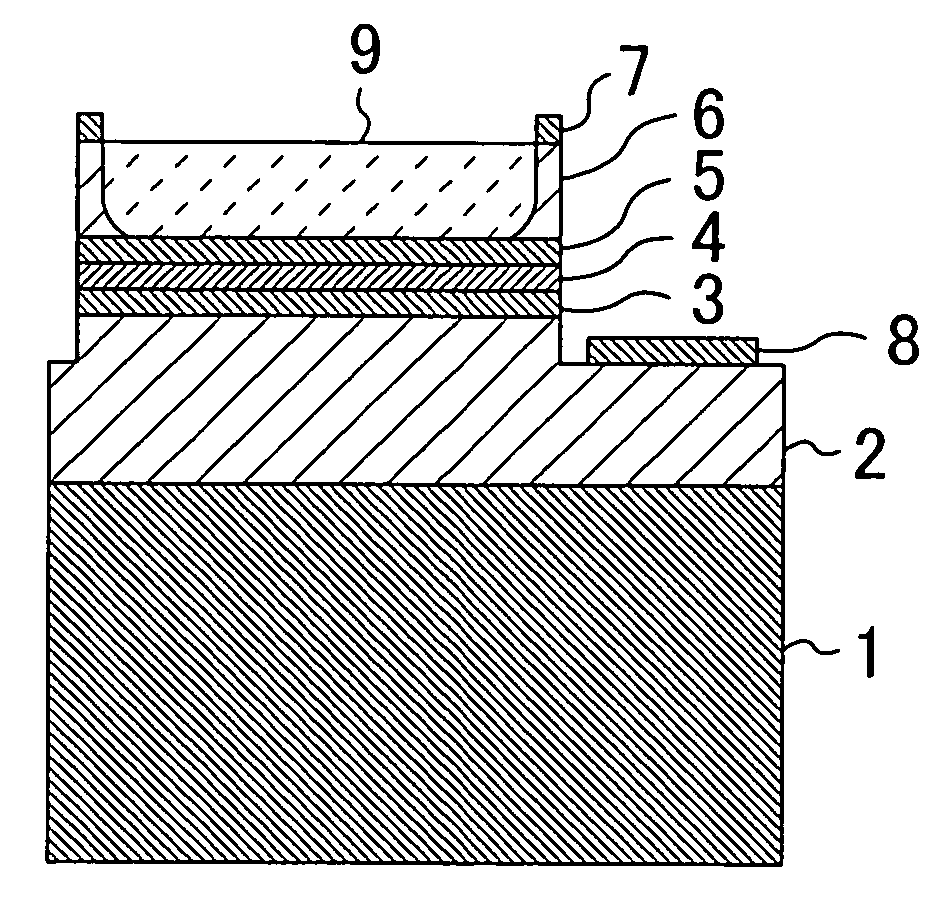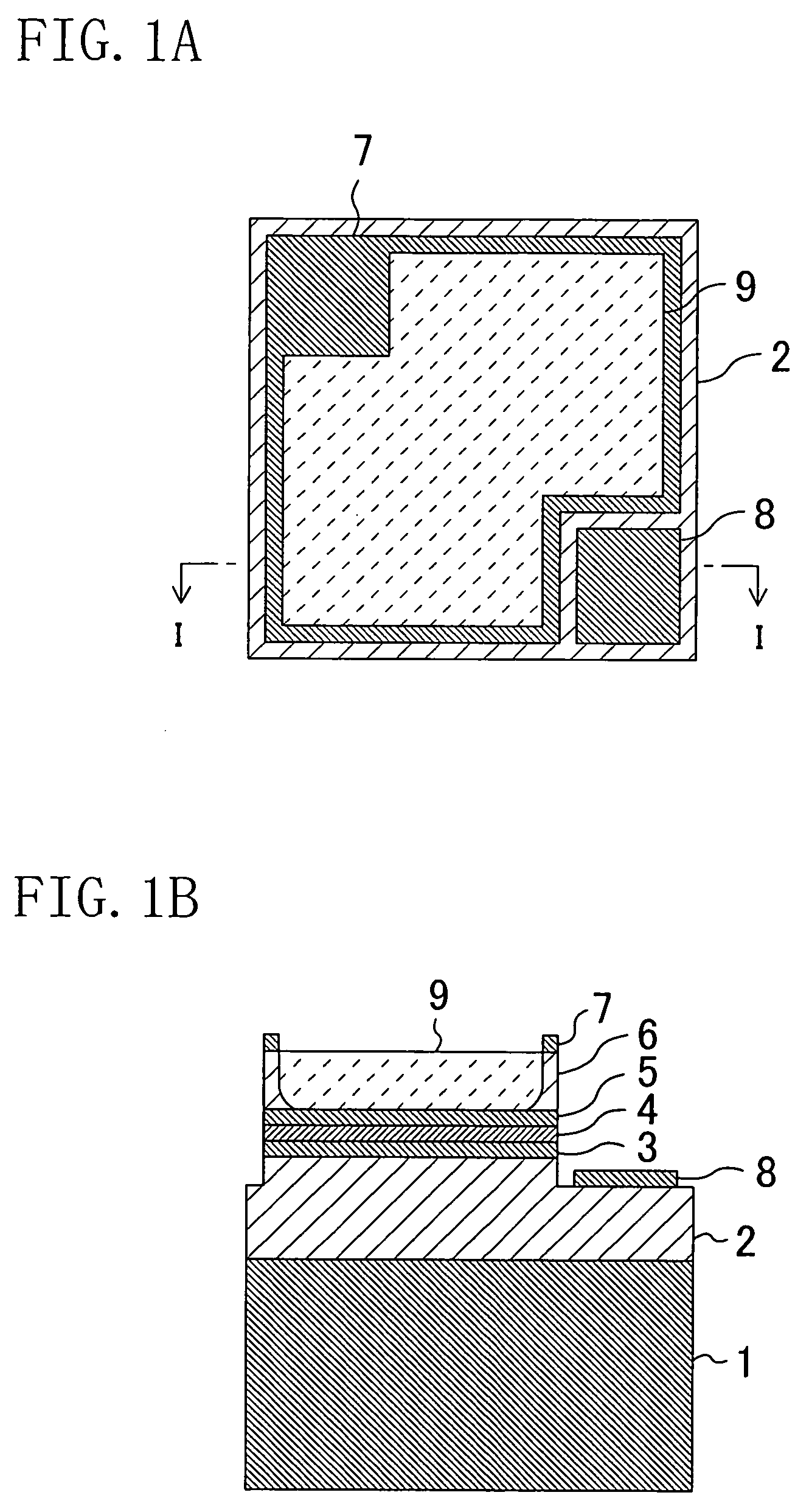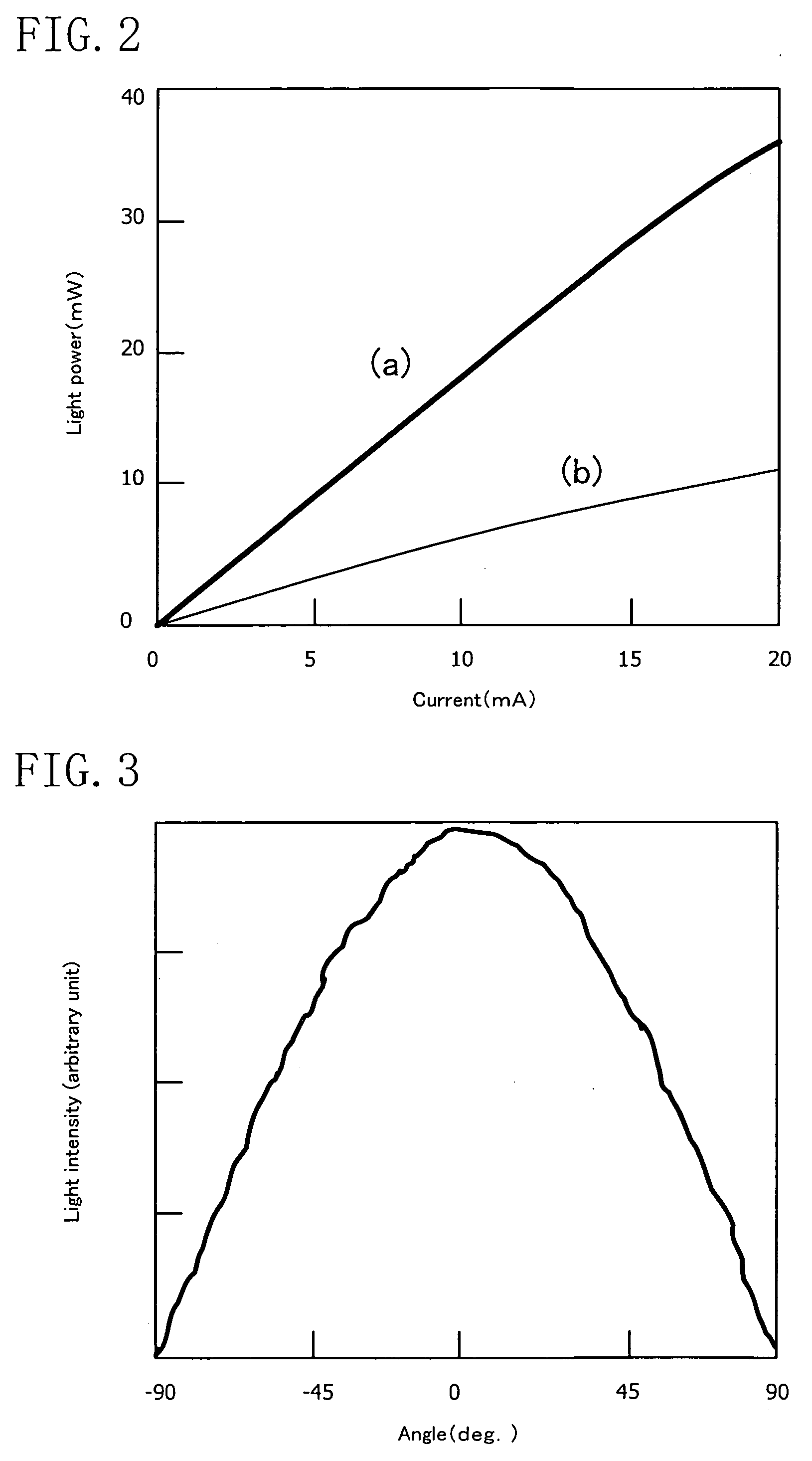Semiconductor light-emitting device and method for fabricating the same
a technology of semiconductors and light-emitting devices, which is applied in the direction of semiconductor devices, basic electric elements, electrical equipment, etc., can solve the problems of difficult formation of ohmic electrodes, damage to p-type gan layers, and weak light-radiation pattern of led chips, so as to improve light-extraction efficiency and improve light-extraction efficiency. , the effect of high light-extraction efficiency
- Summary
- Abstract
- Description
- Claims
- Application Information
AI Technical Summary
Benefits of technology
Problems solved by technology
Method used
Image
Examples
first embodiment
MODIFICATION OF FIRST EMBODIMENT
[0087] A semiconductor light-emitting device and a method for fabricating the device according to a modification of the first embodiment of the present invention will be described below with reference to the accompanying drawings. This modification differs from the first embodiment in the cross-sectional construction of the porous structure 9 in the p-type GaN contact layer 6. That is to say, the basic construction, other than the porous structure 9, of the semiconductor light-emitting device according to this modification is similar to that of the device according to the first embodiment shown in FIGS. 1A and 1B.
[0088]FIG. 6 is a view schematically showing the cross-sectional structure of the porous structure 9 of the p-type GaN contact layer 6 in the semiconductor light-emitting device according to this modification.
[0089] The method for fabricating a semiconductor light-emitting device according to this modification is as follows. First, using an...
second embodiment
[0102] A semiconductor light-emitting device and a method for fabricating the device according to a second embodiment of the present invention will be described below with reference to the accompanying drawings.
[0103]FIG. 7 is a view showing the cross-sectional structure of the semiconductor light-emitting device according to the second embodiment. The semiconductor light-emitting device according to the second embodiment differs from the device according to the first embodiment (see FIGS. 1A and 1B) in that as shown in FIG. 7, not the p-type GaN contact layer 6 but a p-type AlGaN contact layer 10 with a gradient composition is formed of which the Al content continuously decreases, for example, from about 10 to 0% from the substrate side toward the surface side. All components other than that are identical to those in the first embodiment including the fabrication method thereof FIG. 8 is a view schematically showing the cross-sectional structure of a porous structure 9 of the p-ty...
third embodiment
[0106] A semiconductor light-emitting device and a method for fabricating the device according to a third embodiment of the present invention will be described below with reference to the accompanying drawings. The semiconductor light-emitting device according to the third embodiment differs from the device according to the second embodiment (see FIGS. 7 and 8) in the detail construction of a porous structure 9 in a p-type AlGaN contact layer 10 with a gradient composition. That is to say, the device structure in the third embodiment other than this detail construction is identical to that in the second embodiment.
[0107]FIG. 9 is a view schematically showing the cross-sectional structure of the porous structure 9 of the p-type AlGaN contact layer 10 with a gradient composition included in the semiconductor light-emitting device according to the third embodiment.
[0108] Referring to FIG. 9, in the third embodiment, on the semiconductor surface of the p-type AlGaN contact layer 10 wi...
PUM
 Login to View More
Login to View More Abstract
Description
Claims
Application Information
 Login to View More
Login to View More - R&D
- Intellectual Property
- Life Sciences
- Materials
- Tech Scout
- Unparalleled Data Quality
- Higher Quality Content
- 60% Fewer Hallucinations
Browse by: Latest US Patents, China's latest patents, Technical Efficacy Thesaurus, Application Domain, Technology Topic, Popular Technical Reports.
© 2025 PatSnap. All rights reserved.Legal|Privacy policy|Modern Slavery Act Transparency Statement|Sitemap|About US| Contact US: help@patsnap.com



